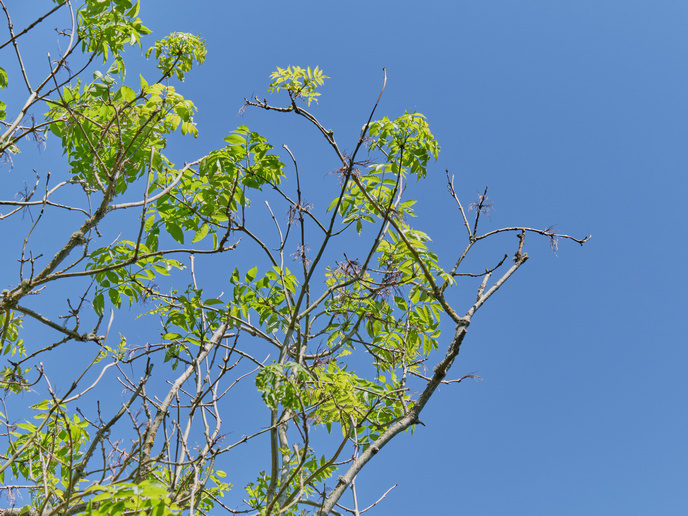Protecting our urban trees from alien pests and diseases
Monocultures and drought-stressed trees are particularly vulnerable to pests and diseases. Past research has mainly focused on forests in the wider countryside, leaving considerable knowledge gaps in the context of urban areas. “Understanding this growing risk is critical for developing efficient strategies for urban tree and forest health,” says principal investigator of TREEPACT, Susanne Raum, who is based at the Chair of Strategic Landscape Planning and Management of the Technical University of Munich. Raum considered urban trees in Germany. “German cities are frequently affected by the horse chestnut leaf miner, the oak processionary moth, and ash dieback.” The latter is caused by the fungal pathogen Hymenoscyphus fraxineus, leading to widespread ash mortality throughout many cities and beyond. The city of Munich, for example, has also experienced several outbreaks of the very damaging Asian long-horned beetle, Anoplophora glabripennis, which can also lead to widespread tree mortality amongst a whole range of deciduous trees, not just ash trees. As Raum explains: “Most of these pests and diseases are not native to Europe. The growing trade of entire trees or shrubs, woody packaging materials, such as wooden pallets, or even firewood, among others, can act as unintentional carriers of potentially very damaging tree pests or diseases.” So the TREEPACT project, which was supported by the Marie Skłodowska-Curie Actions programme, set out to investigate the impacts of urban tree pests and diseases and possible solutions to this growing threat.
New insights into risk awareness and prevention
The project gathered studies from around the globe to capture a wide range of social, environmental and economic impacts caused by tree insect pests and pathogens, focusing on urban areas. The review also collated management responses from the selected studies. “We then undertook an online survey in Germany amongst a wide range of people dealing with urban trees and forests, including urban greenspace managers, urban foresters, tree care specialists, urban planners, hobby gardeners and property owners,” adds Raum. This captured risk awareness and specific knowledge of urban tree pests and diseases and how people respond to this growing threat. To complete the picture, the project also reviewed relevant environmental regulations, policies and programmes linked to urban green spaces, trees and forests in Munich.
Addressing gaps between local action and national biosecurity policies
The study captured a wide range of impacts due to urban tree pests and diseases from 28 countries, ranging from tree damage and mortality to aesthetic or landscape changes, pest/disease management costs and economic losses. “We gathered a wide range of useful data. For example, the survey revealed that while people recognised the threat level was high, and over half felt they knew about pests and diseases, there was limited awareness of certain quarantine pests and diseases and management options.” The project also suggests that limited attention is given to the specific issue of tree pests and disease at the city level, indicating a potential gap between local actions and national and international biosecurity efforts. “Our research brings together knowledge on the impact of, and solutions to, invasive tree pests and diseases. We are now able to inform new policies and management practices related to urban trees and forests,” Raum adds.
Keywords
TREEPACT, urban trees, pathogens, biosecurity, fungal, disease, risk awareness, prevention, tree pests, climatic change, alien pests, ash dieback



